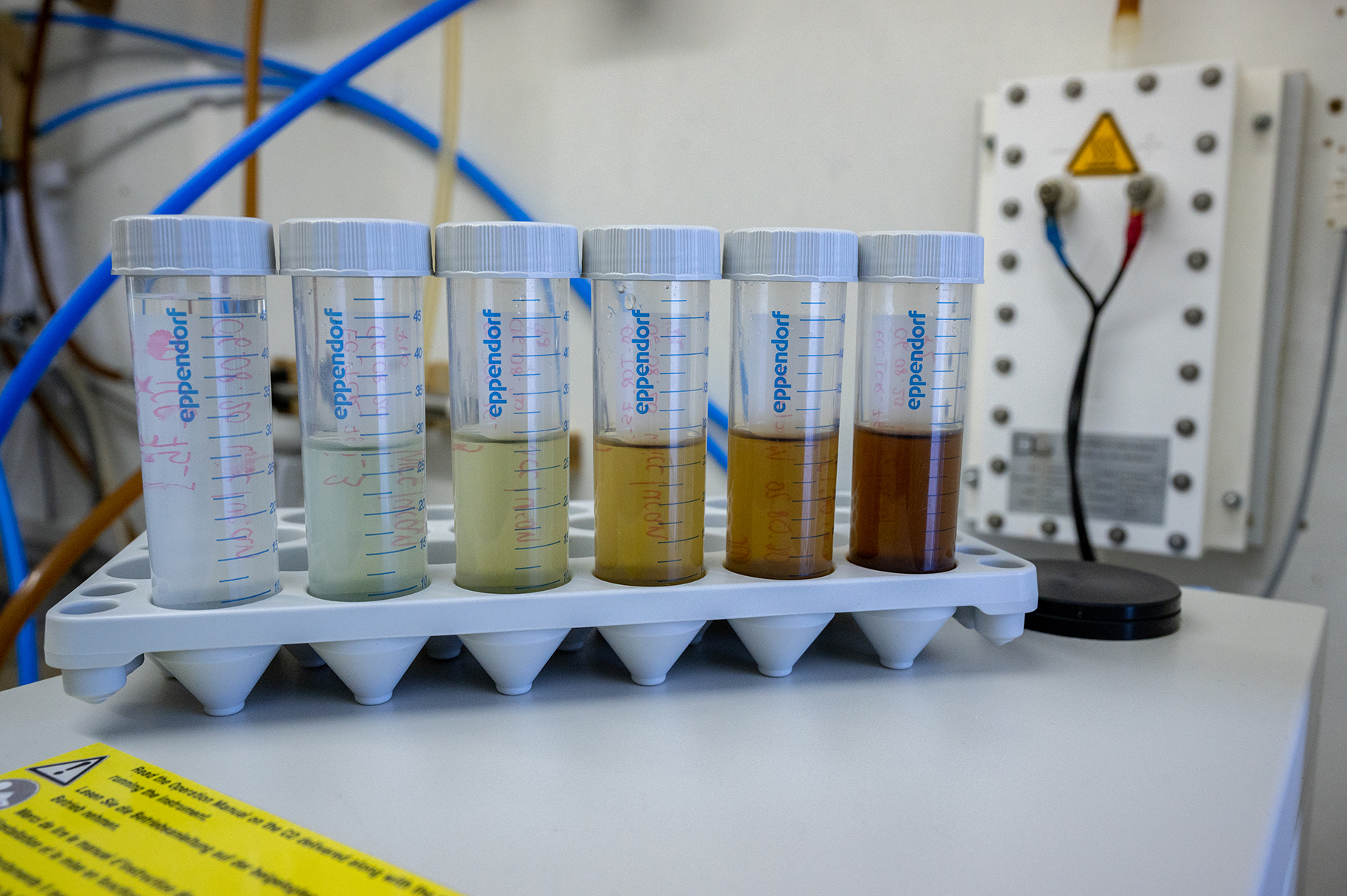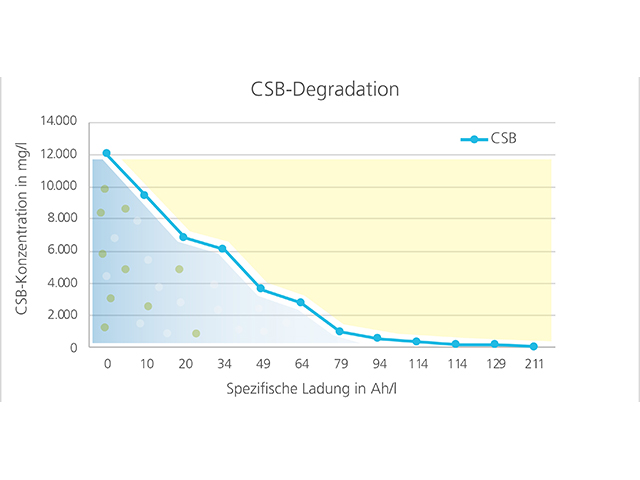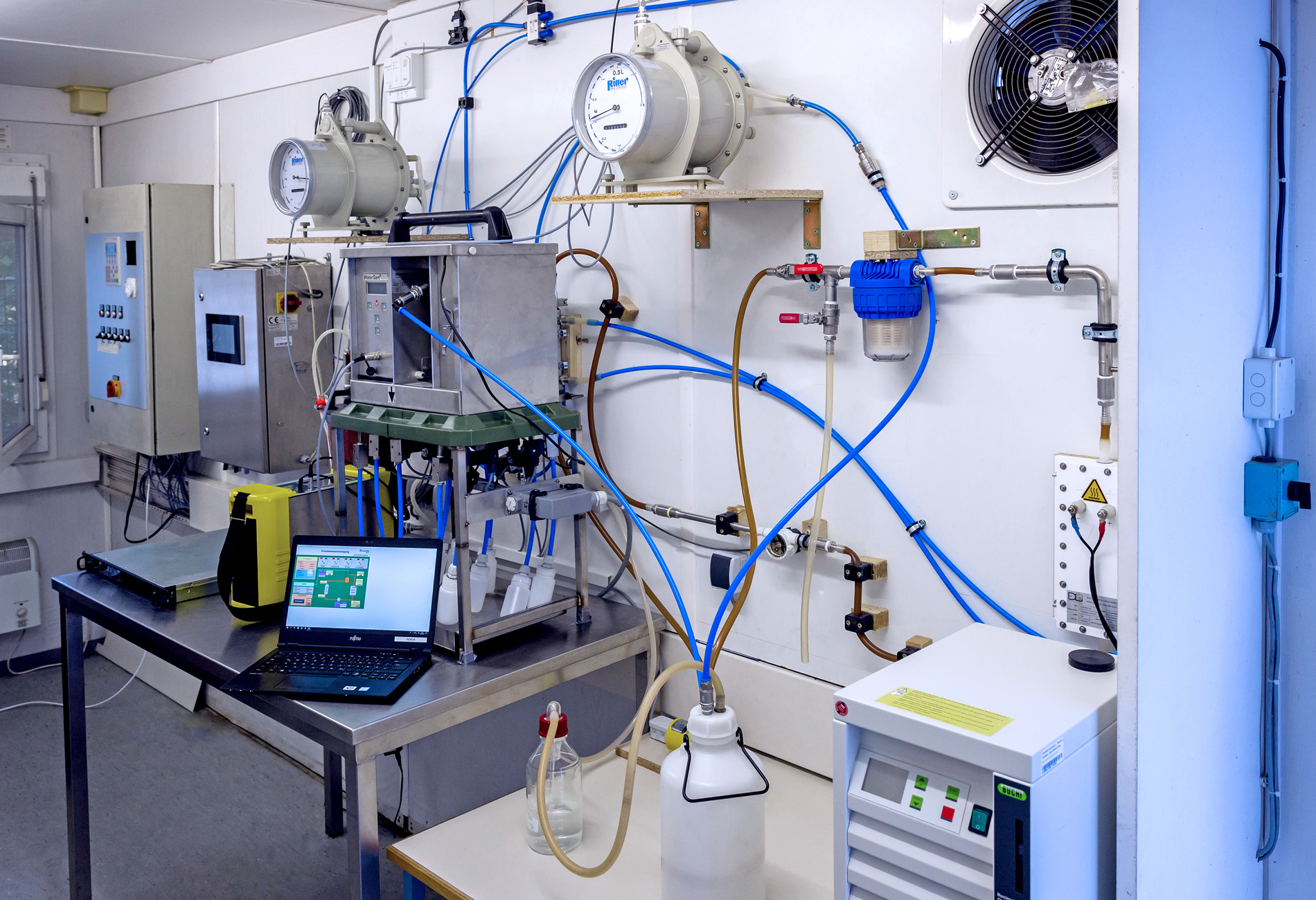Electrochemical wastewater treatment generates hydrogen
A novel electrochemical purification process for highly contaminated process wastewater is to generate hydrogen at the same time. In the AECO H2+ project, a test stand with electrolysis cell is being set-up to undertake test for industrial use of the technology. The project is carried out by Fraunhofer UMSICHT at its Sulzbach-Rosenberg site with the industrial partners DiaCCon GmbH (Fürth, www.diaccon.de) and Blue Eden CleanTech Inc. (Calgary, Canada, www.blueeden.ca) and is funded within the framework of the Central Innovation Program for Medium-Sized Enterprises (ZIM).
A novel electrochemical purification process for highly contaminated process wastewater is to generate hydrogen at the same time. In the AECO H2+ project, a test stand with electrolysis cell is being set-up to undertake test for industrial use of the technology. The project is carried out by Fraunhofer UMSICHT at its Sulzbach-Rosenberg site with the industrial partners DiaCCon GmbH (Fürth, www.diaccon.de) and Blue Eden CleanTech Inc. (Calgary, Canada, www.blueeden.ca) and is funded within the framework of the Central Innovation Program for Medium-Sized Enterprises (ZIM).



For the purification of industrial process wastewater with a high concentration of contaminants (e.g. from the production of biofuels, the pharmaceutical industry, other industrial processes, or from wastewater generated from petroleum and resource extraction, or from heavy transport related tank wash operations), biological wastewater treatment is usually not sufficient. Depending on the process and the input materials, the degree of contamination with organic and inorganic compounds that are toxic or persistent, may be too high and too diverse for discharge after conventional chemical-physical treatment processes.
A proposed solution for such problem wastewater is through the application of an innovative electrochemical treatment process using diamond electrodes. The investigation of the cleaning efficiency regarding different wastewaters as well as the energetic optimization of the process shall be the focus of this research initiative at the Fraunhofer Institute UMSICHT.
Cleaning efficiency by diamond electrodes
At lab scale, Fraunhofer UMSICHT undertook initial experiments with various modelled wastewaters, then duplicated and verified these initial experiments with real process effluents from biofuel production. Fraunhofer Umsicht was able to show that the organic load (measured by the COD value) can be reduced by up to 99% through electrochemical treatment. The researchers explained that this high efficiency in organic reduction was possible because of the ability of diamond electrodes used to generate radical compounds with a very high oxidation potential, resulting in complete oxidation of all organic compounds, non-selectively to CO2 and water. Other processes require different chemical-physical purification stages for this. One of the objectives of the current project is to test the applicability of the technology to other process wastewater in order to broaden the fields of application.
Economic viability: »thanks to hydrogen«
According to the current state of development, the energy consumption of the process is high. However, the process requires only electricity for its operation and no auxiliary materials. It is therefore particularly suitable for industries that generate electricity themselves and may want to use the surplus electricity, e.g. for the purification of process wastewater.
The production of valuable hydrogen as a by-product of wastewater treatment provides a means for additional improvements in the economic efficiency of the process. Specifically, the treatment process produces an electrolysis gas with a hydrogen content of up to 60 volume percent. Our objective is to extract the hydrogen in order to make it usable for industrial applications, such as for on-site refining of crude oils or for direct use in fuel cells. According to calculations by Fraunhofer UMSICHT, a large proportion of the electricity used for wastewater treatment can be recovered through hydrogen utilization. In the project, an electrolysis cell is now being integrated into the test stand to put this into practice.
Last modified:
